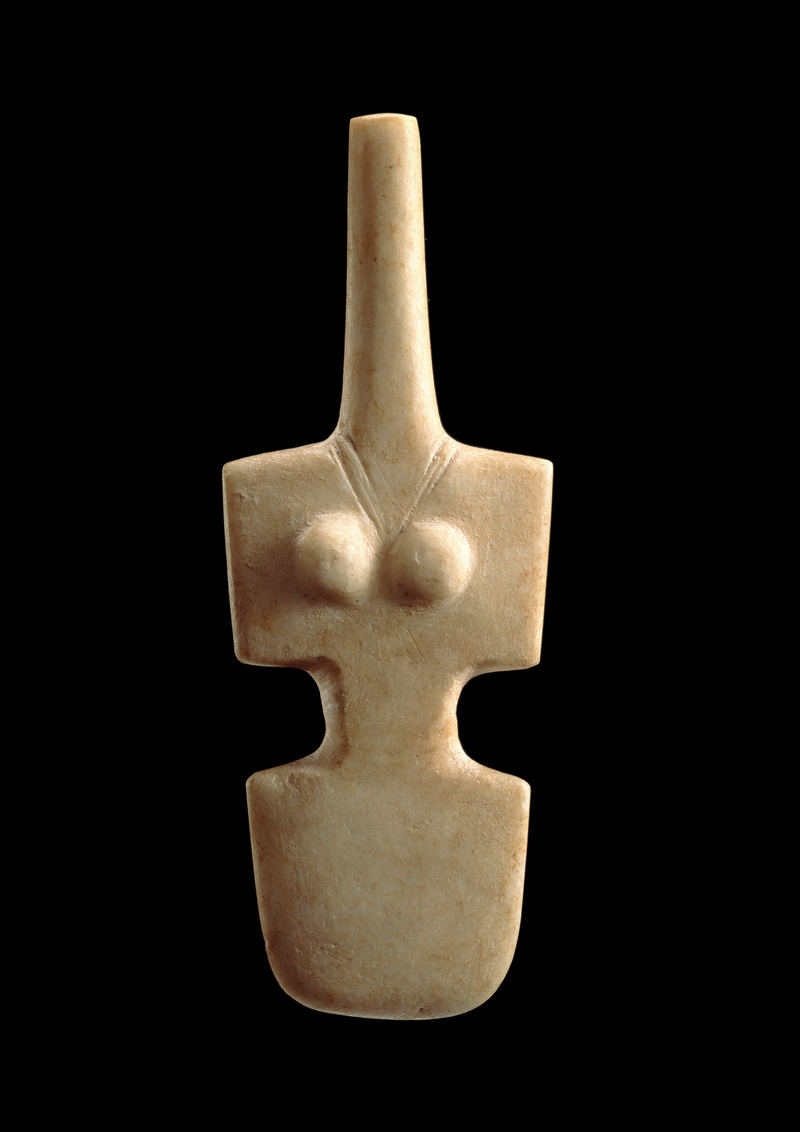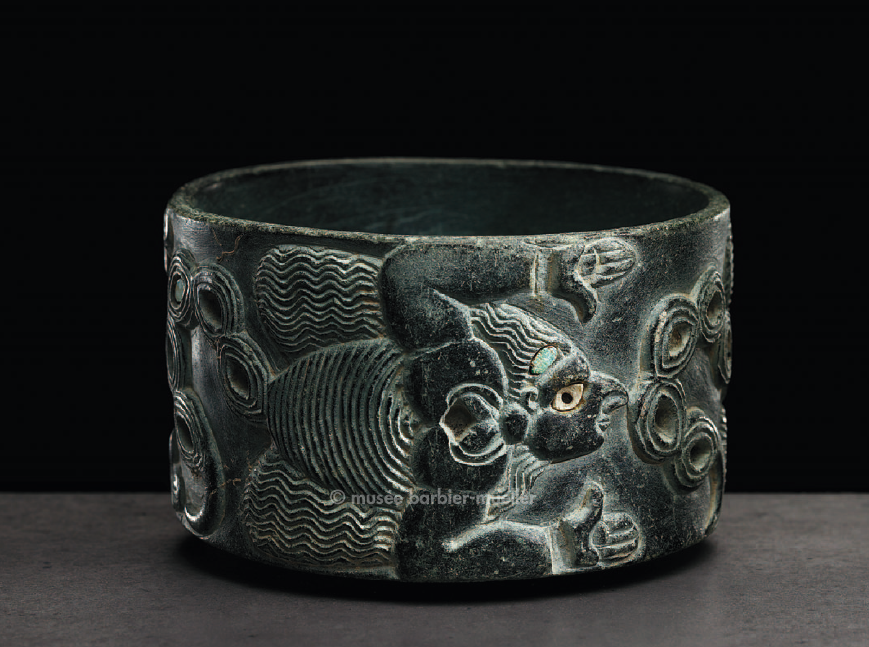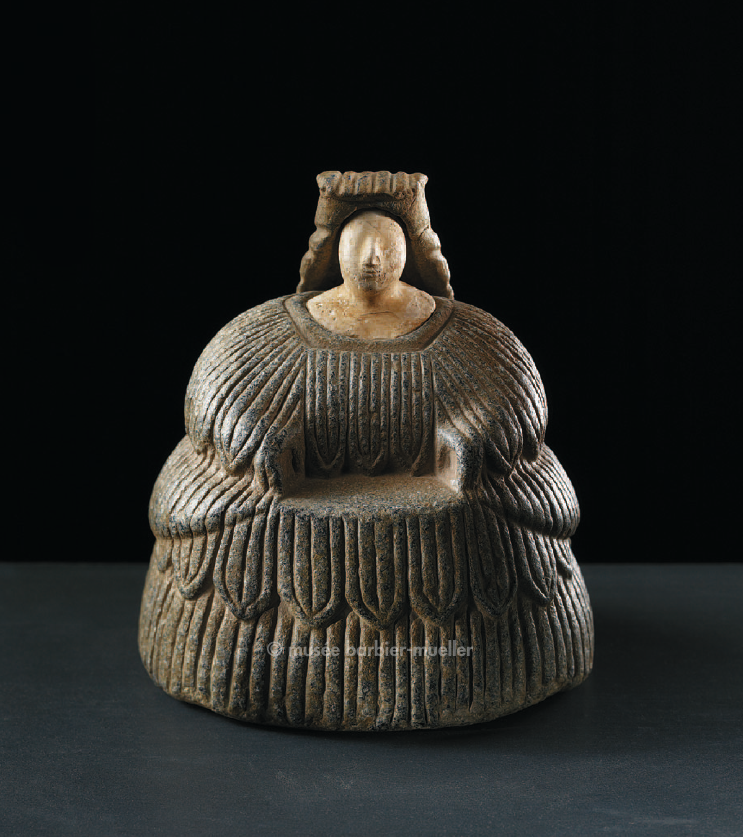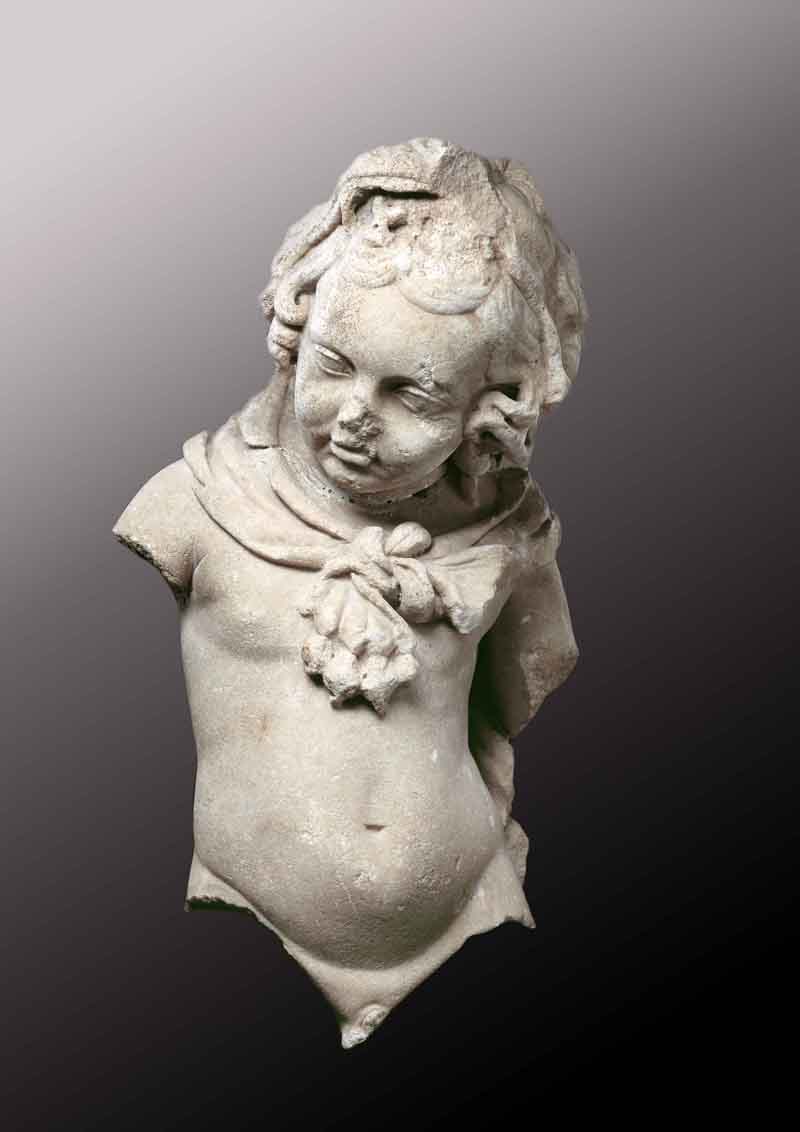This exhibition reflects the passion of three generations of collectors of ancient art. Begun by Josef Mueller in the early twentieth century, the collection of antiquities of the Musée Barbier-Mueller was enriched by the acquisitions of his son-in-law Jean Paul Barbier-Mueller and of his grandsons.
According to the recollections of Josef Mueller, in 1907 he already possessed Greek or Roman objects in his student residence in Zurich. A 1915 photograph of his sitting room at Solothurn shows a Roman stela next to a Kandinsky painting. When he moved to Paris after World War I, he owned a small set of Tanagra-type statuettes and Etruscan vases. All these indications attest to his clear interest in the works of antiquity. He shared his taste for the artistic beauty of these creations with certain artists of his time. In 1907 Pablo Picasso had acquired an Iberian head, from which he drew inspiration in carving his “wood head” and in making preliminary sketches for the Demoiselles d’Avignon. The purity of line, the sobriety of form, and the apparent modernity of third-millennium Cycladic statuettes had already captivated artists such as Henry Moore and Max Bill, who possessed such works. Alberto Giacometti drew them. In the footsteps of these artists, Josef Mueller pursued his quest for ancient objects and rapidly assembled a rich collection of Cycladic statuettes, which would be rounded out and diversified by his son-in-law Jean Paul Barbier-Mueller, thereby becoming the largest collection in private hands.
Jean Paul Barbier-Mueller became interested in the bronzes of the Steppes and of Luristan at a very young age. Later on, the works he had collected came to augment the original core constituted by Josef Mueller. After the two collections were merged following Josef Mueller’s death, Jean Paul Barbier-Mueller endeavoured to introduce coherence into the different sections of the collection and to supply what was missing from it.
The pieces, chosen for their aesthetic quality, are ambassadors of civilization as varied as the Cyclades, Predynastic and Pharaonic Egypt, Greece and Rome. They are landmarks in this representative tour of the artistic production of the ancient world. The panorama offered to visitors illustrates the major tendencies, the extraordinary diversity, and the vitality of the art of antiquity, from the sixth millennium BC to the third century AD.
The art of antiquity did not progress or decline; rather, it underwent transformations. These shifts were the work of time, of human beings and of their history. The relationship the collectors established with these objects gives the visitor the opportunity to engage in a dialogue with works created by ancestral hands. With the exception of a few recent acquisitions, the pieces exhibited are all reproduced in the catalogue Le profane et le divin, Arts de l’Antiquité: Fleurons du musée Barbier-Mueller (The Profane and the Divine, Arts of Antiquity: Jewels of the Barbier-Mueller Museum) and are the object of detailed entries written by specialists in each of the civilizations. The expertise of Agnès Benoit, Jacques Chamay, Pat Getz Gentle, Alain Pasquier, Michel Valloggia, and others thus sheds light on that artistic heritage. Published by the Musée Barbier-Mueller and Hazan, this book is available at the Musée Barbier-Mueller bookstore and at our online shop.




